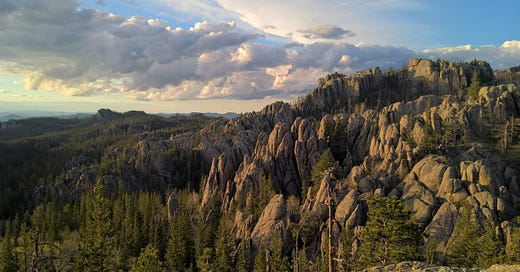Most of us probably spent this past Thursday celebrating Thanksgiving. We visited family and friends, prepared an elaborate meal, watched a football game, and maybe spent time expressing gratitude for all the wonderful things in our lives.
We probably didn’t spend time thinking about ecology, the politics of land ownership, and the brutal history that led to the formation of this holiday.
I don’t expect people to – it’s not pleasant or easy – but I think Thanksgiving is an important time to acknowledge that the narrative of friendly collaboration between Native peoples and European colonizers is a myth.
Our country was not founded on peaceful relations with Indigenous peoples, it was founded on bloodshed, genocide, seizure of land, erasure of culture, and devastation of North American ecosystems. That is a fact.
And I think it’s only fair that we devote some of our time during Thanksgiving, a holiday that perpetuates revisionist history, to ask what we can do to right some of the wrongs committed against Native peoples. And in doing so, help heal and preserve the land we now all share.
One movement that’s been gaining recognition over the last few years is Land Back.
Sometimes written as LANDBACK, it is a political framework that aims to return land to Indigenous peoples, giving the land back to its original inhabitants and stewards.
This can be achieved through the return of public lands by government entities, purchase of land by individuals or tribes, or ecological measures that support traditional land management practices.
Land Back is not just about land either. The movement seeks to reclaim lost culture, language, ceremony, food, education, housing, healthcare, governance, and kinship. It is a rejection of the system that has oppressed Indigenous ways of life; a renaissance of traditional practices, of community, of connection to the land.
Some call it “…a rallying cry for dismantling white supremacy and the harms of capitalism,” acknowledging that Land Back is in opposition to our country’s standard practice of extraction, profit, and careless devastation of people and the environment.
One of Land Back’s pivotal battles is over the possession of Mount Rushmore, which is located in the sacred Black Hills. Although the U.S. government has recognized that the Oceti Sakowin (Sioux Nation) have a right to the Black Hills, they have not agreed to return the land.
While the government has offered to pay the Oceti Sakowin for use of the land, Lakota organizer Madonna Thunder Hawk says “the only reparation for land is land.” Money doesn’t change the fact that the land was never available for seizure in the first place.
Land Back is also ecologically important, in the Black Hills and across all of the United States.
In the Black Hills, uranium mining is destroying habitat, polluting water, and killing important species. Land Back is a crucial step in restoring the health of this important and sacred ecosystem.
Elsewhere in the U.S., a return to Indigenous practices has the potential to repair damaged ecosystems, lower carbon emissions, and foster a compassionate relationship with the land.
For example, traditional oyster harvesting by the Muscogee Nation on eastern coast of the U.S. helped support coastal and estuary ecosystems and maintain a sustainable oyster population. Following their forced removal in the 1800s, the water quality and biodiversity declined. Land Back provides an opportunity to bring back traditional Muscogee practices and improve the health of oyster reefs.
On the West Coast, fire suppression policies have backfired, leading to a buildup of fuel and an increase in large-scale, devastating wildfires. Land Back encourages a return to Indigenous fire management, including prescribed burns.
Across the country, and indeed the world, there is evidence that where Indigenous communities steward the land, there is better management of water, fire, and wildlife. In the face of a disastrous climate crisis, Indigenous stewardship is invaluable.
Some people balk at the idea of Land Back, but rest assured that no one is trying to steal your land (that would suck, wouldn’t it?). Rather, Land Back is about deconstructing the idea of land ownership, acknowledging ancestral connections to the land, and returning agency and power to Native peoples.
And clearly, we all reap the environmental benefits of Indigenous stewardship.
So how do we support Land Back and incorporate its tenets moving forward?
If you’re inclined, you can donate directly to the movement via https://landback.org/donate/. Or you can see if your community has an Honor Tax or a fund to support local tribal initiatives.
You can also take political action. Determine what Native people are fighting for in your community and offer your support. Contact your representatives. Make ecologically-conscious decisions.
At the very least, take the time to learn and acknowledge which tribe(s) are the original inhabitants of the land you live on. Native Land provides a great resource for that.
When we discuss ecology and environmental science, it’s critical to remember that the first (and often best) ecological practices come from Indigenous knowledge. I try to honor that and learn from it when I do science of my own.
And I think we should make a conscious effort to honor that all the time, but especially during moments when Indigenous history is subverted or swept under the rug. We’ve heard the Thanksgiving narrative, we’ve had our celebrations, now let’s remember the real history of this land – the ecology, the culture, the ancestral connections – and decide what we can do to give back.



